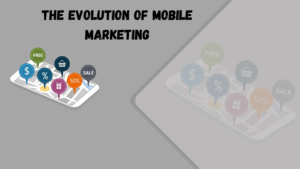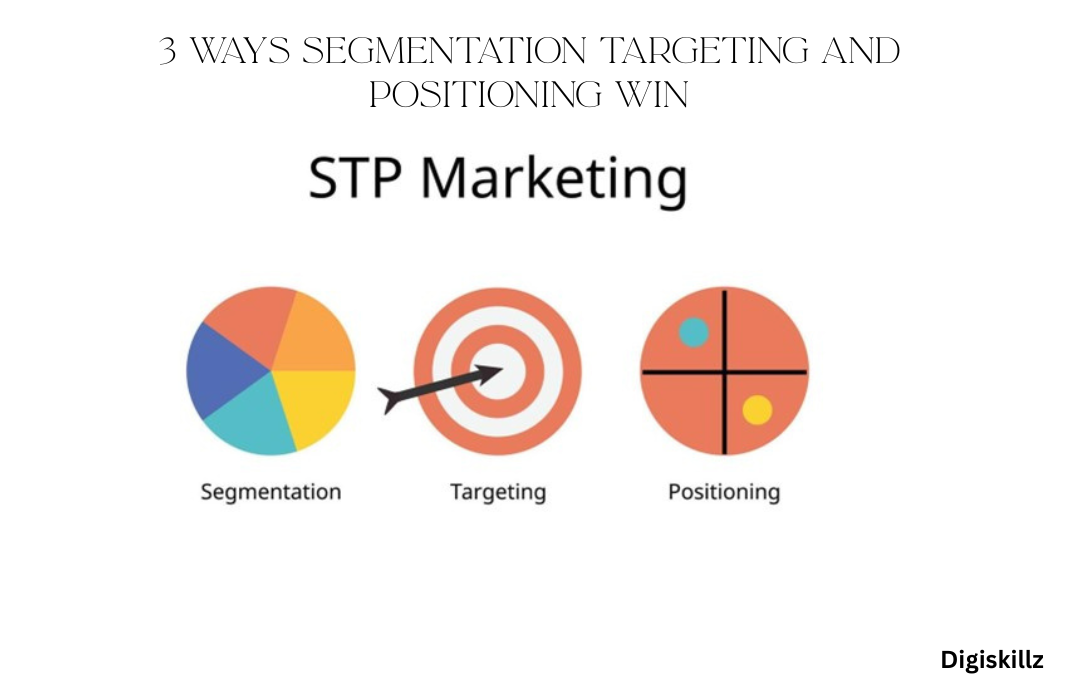As the world becomes increasingly connected, mobile devices have emerged as the primary gateway to the internet for billions of people. Businesses that fail to adapt to this mobile-dominated reality risk losing relevance. A well-crafted mobile marketing strategy is no longer optional—it’s a fundamental requirement for brands striving to engage their audience effectively.
Mobile marketing strategy leverages various tactics, including apps, social media, SMS, email, and mobile-optimized websites, to ensure businesses meet customers where they are. This guide dives deep into the elements, benefits, and best practices of mobile marketing to help you develop a comprehensive approach.
Table of Contents
The Evolution of Mobile Marketing

Mobile marketing strategy has seen a tremendous evolution over the past two decades. Early efforts focused on SMS campaigns, which were straightforward but limited in personalization and reach. The advent of smartphones brought mobile applications, which offered businesses new avenues to engage users with branded experiences.
As 4G and 5G technologies expanded, mobile users increasingly relied on their devices for everything from shopping and navigation to entertainment and work. This shift necessitated mobile-first strategies, emphasizing seamless design and cross-platform compatibility. Today, innovations like augmented reality (AR), artificial intelligence (AI), and geofencing are pushing the boundaries of what’s possible in mobile marketing strategy.
Benefits of Having a Mobile Marketing Strategy

Implementing a mobile marketing strategy is no longer a luxury—it’s a necessity for businesses to thrive in a world dominated by mobile devices. A well-planned approach offers a host of benefits that not only enhance customer engagement but also provide measurable returns on investment.Here is a detailed breakdown of the primary advantages:
1. Increased Customer Engagement
Mobile marketing strategy provides businesses with a direct and personal way to communicate with their audience. Whether through SMS, push notifications, or in-app messages, mobile channels allow brands to engage users in real-time.
- High Open Rates: SMS messages and mobile push notifications have significantly higher open rates compared to emails, ensuring your message is seen promptly.
- Interactive Formats: Mobile-friendly campaigns using videos, quizzes, or polls foster active engagement, encouraging users to interact with your brand.
2. Better Reach and Accessibility
Mobile devices are always within arm’s reach of users, making them the perfect channel for timely communication. With billions of people relying on their smartphones for daily tasks, mobile marketing strategy ensures that your campaigns are accessible anytime, anywhere.
- Global Penetration: Smartphones are used across all demographics, enabling brands to reach diverse audiences.
- Time Sensitivity: Mobile marketing allows you to deliver time-sensitive messages, such as flash sales or event reminders, with instant visibility.
3. Enhanced Customer Personalization
Mobile marketing strategy enables brands to deliver tailored experiences that resonate with individual users. Advanced analytics and tools allow businesses to understand user behavior and preferences, resulting in highly personalized campaigns.
- Location-Based Targeting: Leverage geotargeting to deliver offers and messages relevant to a user’s location.
- Dynamic Content: Display personalized content, such as product recommendations based on browsing or purchase history.
4. Higher Conversion Rates
Optimized mobile marketing strategies often lead to increased conversions due to the ease and immediacy of the mobile experience. Mobile-specific tactics like click-to-call buttons and seamless checkout options make it easier for users to take action.
- Mobile-Friendly E-Commerce: Streamlined navigation, mobile payment options, and one-click purchases contribute to better conversion rates.
- In-App Promotions: Apps allow for highly focused campaigns, driving sales and user actions directly within the platform.
5. Improved ROI
Mobile marketing channels are cost-effective, offering a high return on investment (ROI) compared to traditional advertising. Tactics like SMS campaigns and social media ads are affordable and yield measurable results.
- Cost-Effective Advertising: Platforms like Facebook and Google offer budget-friendly options to target mobile users precisely.
- Real-Time Analytics: Mobile marketing provides instant feedback on campaign performance, allowing for quick adjustments that optimize ROI.
6. Strengthened Brand Loyalty
By meeting customers on their preferred platform and providing valuable experiences, mobile marketing fosters brand loyalty.
- Push Notifications: Regular updates about exclusive deals or loyalty programs keep customers engaged.
- App-Based Engagement: A branded app with personalized features and rewards encourages users to return frequently.
7. Competitive Advantage
A robust mobile marketing strategy sets you apart from competitors who may not have optimized their mobile presence. It demonstrates your commitment to staying relevant and meeting customer expectations in a mobile-first world.
8. Improved Customer Insights
Mobile marketing tools provide invaluable data on user behavior, preferences, and interactions. This data helps refine marketing efforts and informs decision-making.
- Behavioral Analytics: Understand how users interact with your app, website, or ads to optimize their experience.
- A/B Testing: Test different strategies to determine what resonates best with your mobile audience.
9. Increased Social Media Integration
Mobile marketing strategy aligns seamlessly with social media, which is predominantly accessed through mobile devices. Leveraging this synergy enhances the impact of both strategies.
- Mobile-Specific Campaigns: Platforms like Instagram and TikTok support mobile-first ad formats such as Stories and Reels.
- Social Sharing: Mobile users can easily share your content, expanding your reach organically.
10. Future-Proofing Your Business
Mobile marketing strategy positions your business to adapt to evolving consumer behavior. With the ongoing rise of mobile usage, investing in mobile strategies ensures your brand remains relevant and competitive in the years to come.
Core Components of a Mobile Marketing Strategy

A successful mobile marketing strategy is built on a foundation of thoughtful planning and the integration of key elements.Every element guarantees that your plan is in line with the demands of your audience and your corporate objectives. Here are the essential building blocks of an effective mobile marketing strategy:
1. Understanding Your Target Audience
An essential component of any marketing strategy is understanding your target market. For mobile marketing strategy, understanding your users’ preferences, behaviors, and device usage is critical.
- Demographics: Determine important details including location, occupation, age, and gender.
- Behavioral Data: Analyze how your audience interacts with mobile platforms, including apps they use, time spent online, and browsing habits.
- Needs and Pain Points: Understand what your audience is looking for and how your mobile offerings can address these needs.
2. Defining Clear Objectives
Clear and measurable goals guide the development of your strategy and help evaluate its success.
- Common Objectives: These might include increasing app downloads, boosting mobile site traffic, enhancing engagement, or driving conversions.
- Make sure your goals are specific, quantifiable, pertinent, time-bound, and doable.”Increase mobile site traffic by 30% in three months,” as an example.
3. Choosing the Right Platforms
With so many mobile platforms available, it’s essential to identify the ones that align with your audience and objectives.
- Mobile Websites: Ideal for reaching a broad audience, especially for e-commerce and information-sharing.
- Mobile Apps: Best suited for deep engagement, offering unique features, or fostering customer loyalty.
- Social Media Channels: Platforms like Instagram, Facebook, and TikTok dominate mobile usage and are excellent for targeted campaigns.
4. Prioritizing Mobile Optimization
Making the most of your mobile presence guarantees that users will have a smooth and joyful experience.
- Responsive Design: Websites and landing pages should automatically adapt to various screen sizes.
- Page Speed: A slow-loading page can deter users; optimize images and minimize code to improve speed.
- Touch-Friendly Navigation: Buttons and menus should be large enough for easy interaction on smaller screens.
5. Content Adaptation for Mobile
Mobile users consume content differently than desktop users. Tailoring your content to fit mobile consumption is essential.
- Short and Snackable Content: Use concise, engaging formats like lists, infographics, and short videos.
- Interactive Media: Include polls, quizzes, and sliders to boost engagement.
- Mobile-Specific Messaging: Ensure your copy is clear and actionable, emphasizing urgency when needed.
6. Personalization and Segmentation
Mobile marketing thrives on personalization.Based on their preferences and previous interactions, users anticipate personalised experiences.
- Dynamic Content: Create ads or offers that adapt in real-time based on user behavior.
- Segmentation: Divide your audience into groups based on criteria like location, purchase history, or device type to deliver targeted campaigns.
- Geotargeting: Use location data to send relevant offers or updates to users in specific areas.
7. Leveraging Mobile Marketing Channels
Channel selection is the key to effectively reaching your target.
- For time-sensitive communications like updates, reminders, or promotions, SMS and MMS are perfect.
- Push Notifications: Engage app users with timely alerts about new features, sales, or content.
- In-App Advertising: Capture user attention within other apps through banners, interstitial ads, or rewarded videos.
8. Incorporating Mobile Analytics
Analytics tools provide critical insights into the performance of your mobile marketing efforts.
- Key Metrics: Track metrics like app downloads, click-through rates (CTR), retention rates, and conversion rates.
- A/B Testing: Experiment with different approaches to identify what works best for your mobile audience.
- Learn how consumers engage with your app or website to improve their experience through behavioural analysis.
9. Aligning with Mobile SEO Practices
Mobile SEO makes sure that people looking on mobile devices can find your content with ease.
- Local SEO: Optimize for location-based searches by claiming your Google My Business listing and using geo-specific keywords.
- Voice Search Optimization: Adapt to the growing trend of voice searches by targeting conversational, long-tail keywords.
- Mobile-Friendly Design: Ensure your site meets Google’s mobile-first indexing standards for higher search rankings.
10. Implementing Cross-Channel Integration
A consistent brand presence is produced via a smooth experience across all platforms.
- Omnichannel Marketing: Integrate mobile efforts with other platforms like desktop, email, and in-store experiences.
- Consistent Messaging: Maintain uniform branding and tone across all touchpoints to build trust and recognition.
- Cross-Device Targeting: Use insights to retarget users across their devices, ensuring continuity in their journey.
11. Staying Updated with Mobile Trends
Mobile marketing strategy is an ever-evolving field. Staying informed about emerging technologies and trends keeps your strategy ahead of the curve.
- AI and Automation: Incorporate AI for chatbots, personalized recommendations, and predictive analytics.
- Augmented Reality (AR): Use AR features for interactive product demos or virtual try-ons.
- 5G Technology: Use reduced latency and quicker speeds to create immersive experiences and high-quality films.
12. Ensuring Data Privacy and Security
Data security is a major concern for mobile users.Trust is developed through openness and respect for privacy regulations.
- Compliance: Follow regulations like GDPR and CCPA to ensure user data is handled responsibly.
- Permission-Based Marketing: Obtain user consent for notifications, data collection, and location tracking.
- Transparency: Give people the ability to control their preferences and clearly define data usage regulations.
Key Mobile Marketing Channels

Understanding the range of available channels is vital to building a successful strategy. Here’s an overview:
SMS Marketing
SMS remains a powerful tool for sending time-sensitive offers, appointment reminders, and updates. With high open rates, it ensures your message is seen promptly.
Mobile Applications
Apps provide a controlled environment where businesses can offer unique services, personalized experiences, and exclusive content.
Social Media Marketing
With platforms like Instagram, TikTok, and Snapchat dominating mobile usage, brands can create visually appealing campaigns tailored to mobile users.
In-App Advertising
These ads target users while they are actively engaging with apps. From rewarded video ads to interactive banners, the possibilities are endless.
The Role of Mobile Optimization

Your content and platforms will function flawlessly on all devices thanks to mobile optimisation. It’s essential for maintaining user engagement and avoiding high bounce rates.
Responsive Web Design
Responsive design adjusts the layout and functionality of your website to fit screens of all sizes. This is crucial as more users access websites from mobile devices than desktops.
Page Speed
Slow loading times frustrate users and lead to drop-offs. Optimizing for speed involves compressing images, minimizing scripts, and leveraging caching.
User-Friendly Navigation
Simplified menus, touch-friendly buttons, and intuitive interfaces enhance the overall user experience, making it easier for users to complete desired actions.
Mobile SEO Strategies

When viewed from a mobile device, mobile SEO makes sure your website appears highly in search results. Here are some core elements:
Local SEO for Mobile
With mobile users often searching for nearby businesses, optimizing for local searches with Google My Business listings and location-specific keywords is essential.
Voice Search Optimization
With the help of virtual assistants like Alexa and Siri, voice search is rapidly growing.Targeting long-tail keywords and conversational phrases helps cater to this trend.
Mobile-Friendly Content
Create content that’s easily readable on smaller screens. Short paragraphs, bulleted lists, and high-quality visuals improve readability and engagement.
Creating a Mobile-First Content Strategy

Content adaptation for mobile users necessitates a distinct strategy:
Short, Snackable Content
Mobile users prefer quick, easily digestible information. Focus on concise headlines and actionable takeaways.
Video and Interactive Media
Mobile users consume video content at an unprecedented rate.To increase engagement, make use of websites like YouTube and TikTok and think about using interactive elements like surveys and quizzes.
Personalization in Mobile Marketing

The key to effective mobile marketing is personalisation. Tailor your campaigns to user preferences by leveraging:
Behavior-Based Personalization
Use browsing history, purchase patterns, and app usage data to deliver personalized recommendations.
Dynamic Content
Dynamic ads change based on user interaction, creating a more relevant and engaging experience.
Geotargeting
Send location-based offers or updates to users in specific areas, enhancing the relevance of your campaigns.
Conclusion
In today’s fast-paced digital landscape, a well-executed mobile marketing strategy is indispensable for any business aiming to thrive. As mobile devices dominate how people connect, shop, and consume content, businesses must meet their audiences where they are. From SMS campaigns and mobile apps to personalized experiences and advanced analytics, the tools and tactics of mobile marketing are more powerful than ever.
By understanding your audience, leveraging the right platforms, and staying abreast of trends like AI, AR, and 5G, you can craft a strategy that not only meets your business objectives but also resonates with your audience. Optimization, personalization, and innovation are key to standing out in this competitive space.
Whether you’re starting from scratch or refining an existing approach, the potential of mobile marketing is boundless. Embrace its dynamic nature, adapt to emerging technologies, and prioritize the mobile user experience. Doing so will position your brand as a leader in the mobile-first era.











Leave A Comment